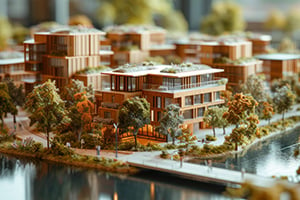
The U.S. Green Building Council is launching a new version of its Leadership in Energy and Environmental Design green building rating systems, more commonly called LEED. Among the many changes expected with the release of LEED v4, one can expect heightened requirements to improve energy performance. Below are a few areas in which these heightened requirements are reflected in the LEED EB: O+M rating system.
First, any project hoping to receive a LEED EB: O+M certification will have to achieve an ENERGY STAR score of 75 or higher, whereas version 3 requires a score of at least 69. The USGBC stated that the reason behind this was to ensure that LEED continues to raise the bar and set leadership standards.
Another feature that will change with v4 is an alternate path to certification, a pilot credit known as Energy Jumpstart (Pilot Credit 67) has been created. This credit is for buildings that are less efficient energy performers. The U.S. Green Building Council recognizes that with these buildings lies the greatest opportunity for improvement and thus should not be overlooked. The Energy Jumpstart credit states that if a building can demonstrate a 20 percent improvement in energy efficiency over an established baseline during a 12-month period, it can receive a LEED certification – but only at the Certified Level.
Whereas version 3 of the LEED rating system features five main credit categories (Sustainable Sites, Water Efficiency, Energy and Atmosphere, Materials and Resources, and Indoor Environmental Quality), the new version will introduce an additional category for Locations and Transportation. Below are the new LEED v4 EB: O+M credit categories and their components that will be presented in the fall:
Location and Transportation:
- Alternative Transportation
Sustainable Sites:
- Site Management Policy
- Site Improvement Policy
Water Efficiency:
- Building – Level Water Metering
- Outdoor Water Use Reduction
- Cooling Tower Water Us
Energy and Atmosphere:
- Minimum Energy Performance
- Building – Level Energy Metering
- Ongoing Commissioning
- Advanced Energy Metering
- Demand Response
- Renewable Energy and Carbon Offsets
Materials and Resources:
- Ongoing Purchasing and Waste Policy
- Facility Maintenance and Renovations Policy
Indoor Environmental Quality:
- IAQ Management Program
- Enhanced IAQ Strategies
- Daylight and Quality Views
For more information please check out the U.S. Green Building Council website at www.usgbc.org.
© 2013 Sustainable Investment Group (SIG). All rights reserved.



